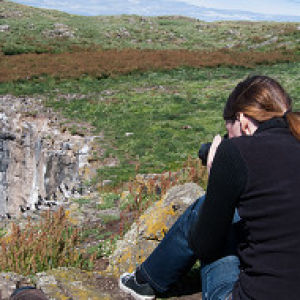Miri
Miri is an oil town. It grew rich through oil but its economy is very much tied to the price of oil and gas. There are signs that it’s not doing so well at the moment – there are a number of housing developments that were started during a boom time and have been left unfinished now that there’s a dip in the economy.
This afternoon I went to a museum on a subject that wouldn’t normally interest me – the petroleum museum. I went on the trail of information about what Miri was like in the late 1940s and early 1950s when the tanker my grandfather worked on regularly stopped at Miri. I was disappointed. The ‘museum’ was more like an oil industry propaganda display. There was a small section with a timeline of developments and an aerial photo of the river where I assume the tankers were loaded up but nothing else of any relevance.
I sat outside the museum with this view, overlooking the town and out to the South China Sea, and looked up a Miri history website. It said that at the end of WW2 Miri was almost totally destroyed, with all the oil wells on fire. It didn’t say whether the destruction was caused by allied bombing or by the Japanese before they surrendered. Or maybe both. Oil production was up and running again by October 1946 and, we know from the one logbook we have, that my grandfather was here in February 1947. It must have looked totally different to today.

Comments
Sign in or get an account to comment.


